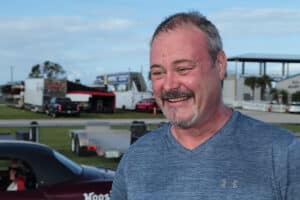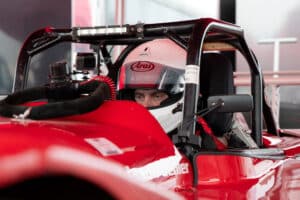
Everything You Wanted to Know About NASA's Thunder Roadster Racing Series
The Thunder Roadster is one of the purest racecars in all of NASA’s racing series. They are designed and built solely as racecars to adhere to a strict set of rules. The end result is an affordable racing series with competition that is as close as you can get anywhere. They are rugged and durable, easy on consumables and affordable to buy, race and maintain. This series is about the driver, perhaps more demonstrably than many other NASA series. Thunder Roadster championships fields are growing and there’s close racing throughout the entire field no matter where you are. And isn’t that why we race?
One of the biggest appeals of the Thunder Roadster class is the low price of admission. There are no donors because these are not production automobiles converted to racing trim. They are designed and built by U.S. Legend Cars International as purpose-built racecars. Prices range from $7,500 to $30,000 for used, race ready NASA spec racecars.
There are two preparation levels in Thunder Roadster: prep level 1 and prep level 2. Be aware that Prep level 1 is gradually being phased out in favor of the faster and more reliable Prep level 2. Prep level 1 is Thunder Roadster TR, which uses Yamaha 1200 or 1250 with stock Mikuni BS36 carburetors and black ignition coils / box as delivered from US Legends Cars. Owners may convert air cooled to water-cooled, but the TR cars must run the 2:93:1 or 3:30:1 rear axle ratios.
Prep level 2 cars, known as GTR cars, use first- and secondgeneration Suzuki Hayabusa engines with the stock Mikuni BS36 carburetors and the spec manifold. Any performance modifications to the engine to alter the factory stock horsepower are strictly prohibited. However, oil pump gears, oil pans and oiling system components may be upgraded to maintain adequate oil pressure. The 3:58:1 rear axle ratio is mandatory.
Varies by preparation level, but both are weighed with driver.
Prep Level 1 1,500 lbs.
Prep Level 2 1,600 lbs.
New cars are available from Toys by Tink for right around $39,000.
Prices on used cars range from $7,500 to $30,000.
The Thunder Roadster GTR rules are fairly well locked down, which means modifications are limited.
Tires, size, brand and prices
Hoosier 26.5/8.0-15 Roadster Edition, $130
Brakes, brands and prices
Carbotech, Hawk, Wilwood, $90 to $225
Check the NASA Contingencies page for the latest programs.
8.2. Air Filters
Only stock and K&N air filters and Outerwears Pre-Filters coverings as delivered new by US Legend Cars are permitted. Velocity/ram stacks are not permitted. No components that direct airflow to the carburetors or increase airflow are permitted.
8.19.2. Metal Fatigue
It is highly recommended to have the frame checked periodically by an expert for metal fatigue. Cracked or broken frames are strictly prohibited from any NASA sanctioned events.
8.31. Radios are Permitted
Two-way radios will be permitted in competition.
8.37. Shocks
All cars must use spec Bilstein shocks as delivered new by U.S. Legend Cars International for use on a Thunder Roadster. Changing or altering the shock or fluid or pressure inside is illegal. Altering or tampering with the shocks or competing with the same, will result in a penalty from probation to an indefinite suspension. Shocks may be turned upside down. Shock bumpers are permitted (maximum 1/4” tall).
9.5. Exhaust System
The header, gaskets and muffler must remain within the stock dimensions, steel thickness, location and configurations of the original, as delivered by U.S. Legend Cars International. Stainless or standard steel headers allowed. The internal components of the header may not be altered. Header wrapping (tape) is acceptable. Ceramic or baked on coatings are not permitted.
10.10. Oil Catch Cans
Oil catch cans (maximum 1 quart capacity each) can be used. It must be securely fastened and remain within the engine compartment. It may only be plumbed in by hose from the stock crankcase breather opening and/or the oil fill cap. A return line may be run to the stock return fitting on the oil pan.
Thunder Roadster Resources
Questions and Answers to Feed Your Curiosity
Latest Thunder Roadster News Around The Country
Whether you have a street car you run in HPDE, a fire-breathing TTU monster, or one of NASA’s many spec-class racecars, you need quality lubricants […]
Wouldn’t it be great if there were a NASA contingency and Member Benefits partner that offered rewards and discounts on hardcore racing parts we […]
As NASA’s official tire retailer, TrackDayTire.com gives NASA members immediate access to an extensive national inventory of Toyo and Hoosier DOT R […]
The 2023 NASA Championships were the culmination of hard work and sacrifice for the drivers who came from across the United States to compete at the […]
Last week we published the Time Trial reports from Barber Motorsports Park in July. This week, we bring you the racing action from Barber, and there […]
What Thunder Roadster Competitors Say



Get On-Board with Thunder Roadster Drivers
Thunder Roadster Series Contacts